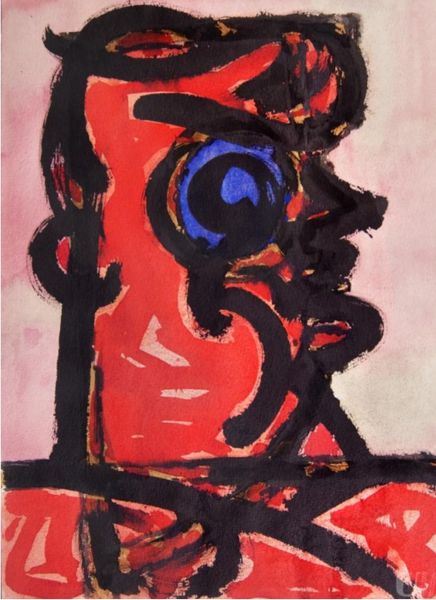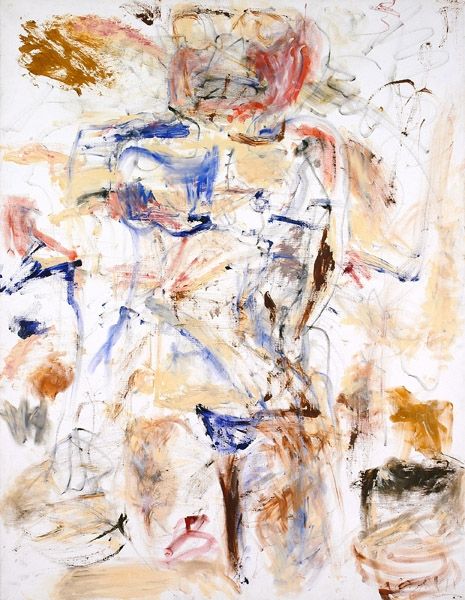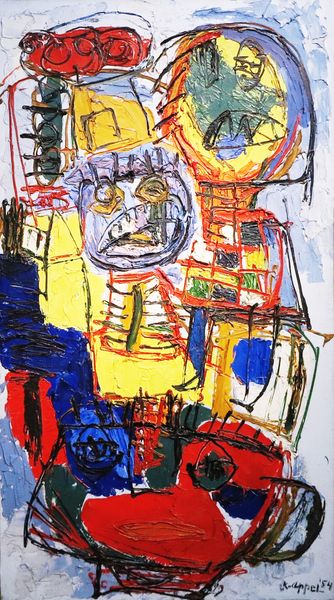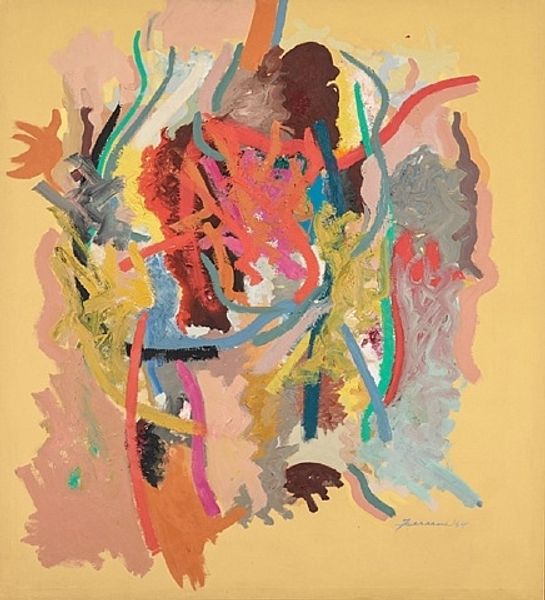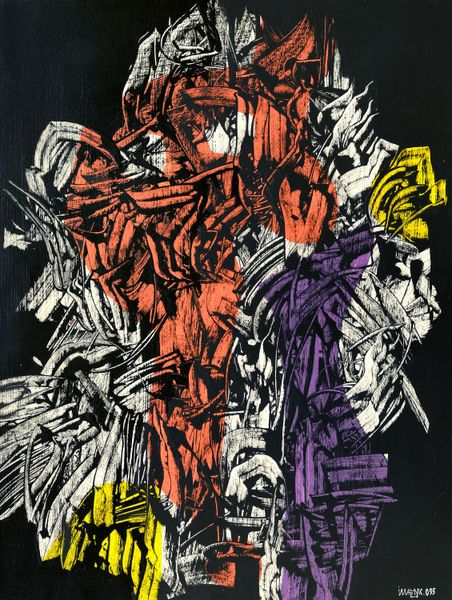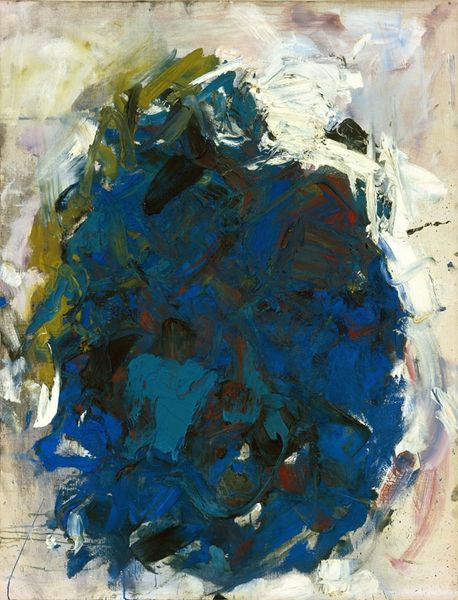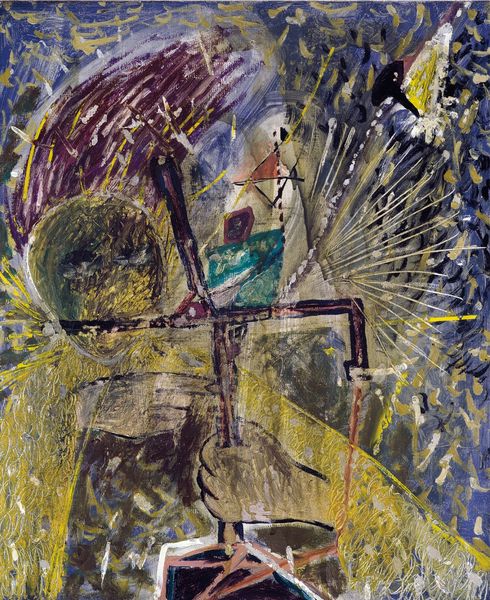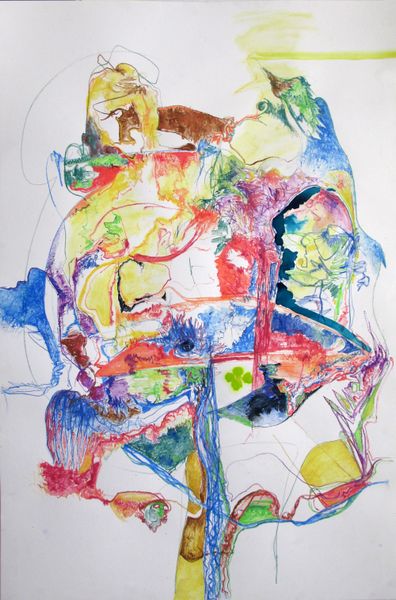
#
cobra
Copyright: Karel Appel,Fair Use
Curator: This is Karel Appel's "Young Girl," an acrylic on canvas created in 1957. Editor: My immediate reaction is of raw energy and intense emotion, a primal scream rendered in paint. Curator: Appel, as a member of the CoBrA group, really pushed the boundaries of post-war art. We can view this piece in terms of a collective European memory of the absurdities that resulted in trauma, chaos, and a crisis of the image. Do you think it expresses that kind of weight? Editor: Absolutely, although on the surface the image could seem crude, child-like even. The layers of paint create an emotional texture as palpable as any portrait rendered through careful brushstrokes, suggesting, I believe, the social disruption after World War II. There is something about the way the face is built, that summons associations to the trauma of conflict. Curator: I’m interested in the specific symbology and cultural impact of the color choices here. Look at the way he uses black to surround this figure, to frame a raw figure from that moment in time. We see the red hinting at inner life as blood and passion. In that era, these colors served as codes representing alienation, a collective response to modernity's trauma. Editor: You’re speaking to the tension between the individual and society? What is more striking to me is how Appel presents figuration during a time in art when pure abstraction was fashionable and loaded with meaning. By continuing to reference the figure in abstract form, his art takes on a new level of social awareness, and his color schemes reinforce this. Curator: Exactly. The rough brushstrokes are there not just to represent an immediate emotion but to signal broader anxiety that had historical roots. In what ways, can you read this specific historical tension as an influence within his wider body of work? Editor: I’m particularly interested in Appel's ability to render a seemingly simple subject such as a girl, loaded with anxieties rooted in recent and broader social issues that shape human character in ways unseen within much modern art, that speaks volumes about art’s role to provoke societal reflection. It’s fascinating how history echoes in what appears abstract at first. Curator: It leaves us reflecting on art's potential as an anchor. Editor: Yes, the painting transforms personal experience into cultural insight.
Comments
No comments
Be the first to comment and join the conversation on the ultimate creative platform.

